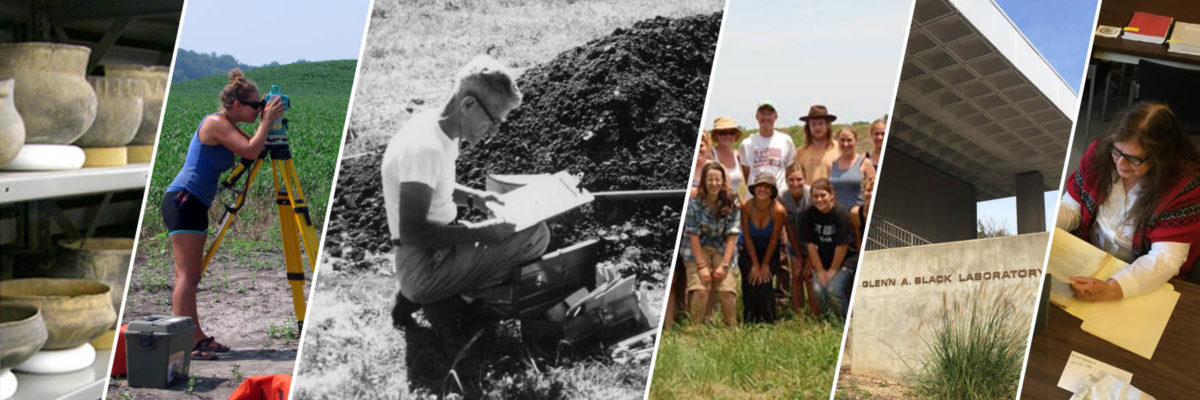by Ryan Edward Peterson

Hello everyone! My name is Ryan Peterson. I am a member of the crew that has been working hard all summer on the Angel Mounds rehousing project here at the Glenn Black Lab. As a member of the “Saving America’s Treasures” (SAT) team I have spent my summer decked out in gloves and a mask rehousing, conserving, and reintegrating the Angel Mounds collection.
I am a second year PhD student at Indiana University. My focus is on Great Lakes archaeology, specializing in the production, procurement, and exchange of native copper on islands and coastlines in the Upper Great Lakes. The isolation of these raw resources spurs me to study the question of how copper from the Upper Great Lakes has been found dispersed in a variety of places, including Angel Mounds. As a Great Lakes archaeologist, the movement of people, especially over large bodies of water, is another important facet of this area of study. This movement links directly with the use and exchange of Native copper throughout the region.
Currently, the rehousing team is working our way through the faunal bones from Angel Mounds. These materials are purposefully being rehoused first, due to the degree of mold that has grown on the materials (in comparison to the rest of the collection). We have a saying at the GBL, “the worst goes first!” We prioritize our rehousing and conservation based on the artifacts that have the greatest need.
As the team goes through bag after bag, and box after box of bone, we continuously find more than just bone in these bags. In these bags, along with the bone, we find a mix of many other materials, such as pottery, lithics (stone), wood, and other materials that were mistaken for bone when the original WPA workers roughly sorted the artifacts. As the original WPA workers learned how to identify one artifact from another, they slowly became more efficient at distinguishing artifacts. This was a trend noticed as the rehousing team at first found a large amount of mixed materials in the early boxes of bone, but the amount of mixed materials slowly tapered down as the experience of the WPA workers went up.
Identifying these mixed materials can be quite a challenge to the untrained observer. When attempting to distinguish these materials from one another, two of the biggest clues are the texture and weight of the artifacts. Wooden artifacts are light in weight and contain a grain-like structure. Lithics, in contrast, are heavier than the average bone, but their smooth surface can be deceiving when compared to long bone fragments. Ceramics at Angel Mounds are tempered with shell (temper is added into the clay and helps strengthen the pottery during firing). This shell tempering is very distinctive and can help identify an artifact as ceramic even if its shape is deceiving. It is common to find ceramics formed into not only vessels, but also effigy figures. Many of these figures, especially when broken, can bear a shocking resemblance in shape to bone.

Bone (left) and ceramic sherd (right) 
Shell tempered ceramic sherd
After these artifacts are pulled from their incorrect bags, the mixed materials are removed, labeled, and placed aside. The rehousing team then goes through the Angel Mounds catalog system to determine where other materials from the section that the original bone was in are located in the Angel Collection. These artifacts are then organized by their new location and placed in what should have been their correct location. As these artifacts are placed into their temporary new location, we often rediscover new things in the multitude of boxes that are being opened. This process is referred to as reintegration. The reintegration of these materials into the larger Angel Collection as a whole allows for a more accurate curation and management of materials, along with creating the potential for more accurate collections-based research.

